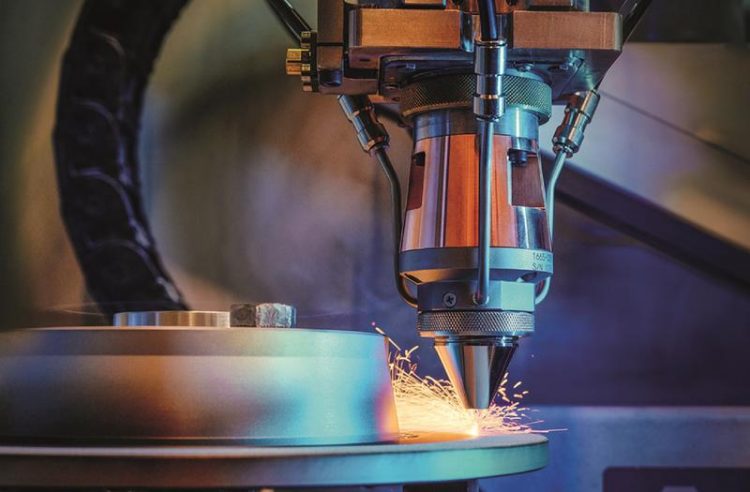LASER World of PHOTONICS China Shanghai 2019: When the laser drills, cuts and coats…

Demonstration: A video at the Laser World of Photonics China Shanghai 2019 shows how quickly, precisely and efficiently EHLA works. Fraunhofer ILT, Aachen, Germany / Volker Lannert.
Helical optic
Industrial applications require the precision of machining, especially for micro drilling and cutting the controllable drilling diameter and kerf width, as well as desired taper. The new Helical Optic v6s provides highest drilling and cutting quality with high controllability and reproducibility in a large variety of materials and is able to machine hardened glass, sapphire, silicon wafers and diamond.
Fully controlled drilling of boreholes
In the center of this device, a Dove prism rotates at up to 20,000 rpm. At first, this leads to a rapid rotation of the laser beam itself, allowing for an effective smoothing of the beam profile. In addition, the laser beam rotates on a circular path with an adjustable diameter.
You can also set the tilt angle of the beam, allowing full control of the aspect ratio and conicity of the borehole. Since the upcoming technology was firstly sold in 2008 as version 1, the helical drilling technology has undergone several developments in optics and systems to make it suitable for higher processing requirements.
In addition, the Helical Optics v6/v6s use a modular design and standardized interfaces with better integrability. This compact design saves 15 percent of the volume compared to the previous version, enabling the optical system to be better integrated into the laser machining center.
However, the Fraunhofer ILT booth will focus on practical examples such as the following: Right-angled helical cutting of high-performance ceramics (effective cutting speed 10 mm/min, Ra on cutting kerf less than 0.7 μm).
Alternative to hard chrome plating
EHLA, the extreme high-speed laser material deposition, is tackling another task: As an alternative to hard chrome plating, Fraunhofer ILT and RWTH Aachen University have developed this process.
The new process raises the obtainable process speed by orders of magnitude compared to conventional laser material deposition to up to 500 meters per minute. Another benefit of EHLA is that it needs much less material, as it reduces the coating thickness that can be manufactured from over 500 micrometers to between 25 and 250 micrometers.
Industrialization in China
In cooperation with ACunity, a Fraunhofer ILT spin-off, focusing on customer support and process development for laser technology, the Dutch machine integrator Hornet Laser Cladding already delivered several EHLA systems to China. “We’re continuously further developing EHLA into an even more effective and cost-efficient process,” says Thomas Schopphoven, scientist and leader of the Productivity and System Technology team in the Laser Material Deposition group at Fraunhofer ILT.
Use in the automotive industry
As one of the most prominent and promising applications, the scientist mentions the possibility of coating car brake disks using EHLA. But the technique can also be used in the aviation industry. Schopphoven explains: “EHLA is particularly suitable for the repair of landing gear components, whose anti-corrosion and anti-wear coatings also have to withstand very high stresses, similarly to brake disks.”
Videos at the Fraunhofer ILT booth (Hall 3, Booth 3101) will show how EHLA and Helical Optics works.
M.Eng. Chao He
Group Micro- and Nano Structuring
Telephone +49 241 8906-611
chao.he@llt.rwth-aachen.de
Dipl.-Ing. Thomas Schopphoven
Group Laser Material Deposition
Telephone +49 241 8906-8107
thomas.schopphoven@ilt.fraunhofer.de
Media Contact
All latest news from the category: Trade Fair News
Newest articles

Properties of new materials for microchips
… can now be measured well. Reseachers of Delft University of Technology demonstrated measuring performance properties of ultrathin silicon membranes. Making ever smaller and more powerful chips requires new ultrathin…

Floating solar’s potential
… to support sustainable development by addressing climate, water, and energy goals holistically. A new study published this week in Nature Energy raises the potential for floating solar photovoltaics (FPV)…

Skyrmions move at record speeds
… a step towards the computing of the future. An international research team led by scientists from the CNRS1 has discovered that the magnetic nanobubbles2 known as skyrmions can be…





















